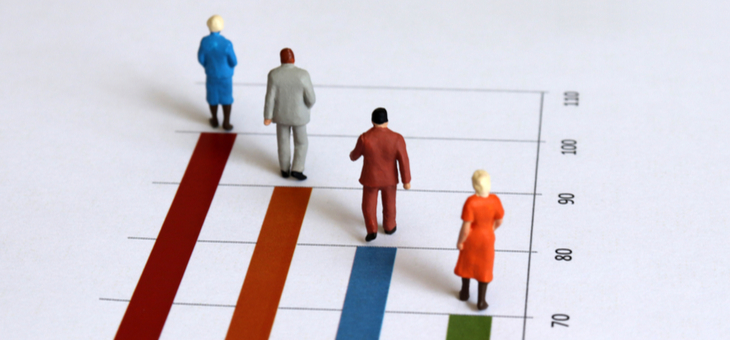Yes, women live longer than men. But they also report more illness. And, yes, the overall life expectancy of Australians is still rising, but there are huge discrepancies within our society, and those of us living longer are often unhealthy.
The latest Australian Institute of Health and Welfare data shows that life expectancy for Australians born today is now 82.8 years, above the Organisation for Economic Cooperation and Development (OECD) average of 80.7 years, and the seventh-highest life expectancy among OECD member countries.
The Guardian reports that other positive results include Australia being among 22 OECD countries in which 100 per cent of the population is covered by public or private health insurance. We are also among nations with the lowest proportion of daily smokers among people aged 15 and over (11.2 per cent).
But we have obvious health problems.
“Australia ranked sixth out of 22 of the 37 OECD countries with available data for the proportion of people aged 15 and over who are overweight or obese (65 per cent) – this was also greater than the OECD average of 59 per cent. Australia had the second-highest rate of obese men, (32 per cent), behind the US (38 per cent), out of 23 OECD countries with available data for that measure. Australia had the eighth-highest proportion of obese women, at 29 per cent compared with the OECD average of 25 per cent.”
Heart Foundation risk assessment manager Natalie Raffoul says while life expectancy is still increasing, research shows Australians are living longer but in poorer health.
“Around 95 per cent of Australians are not eating the recommended five serves of vegetables per day and we are eating too many discretionary foods such as cakes, biscuits, fried foods and fast foods,” she says.
“More than 80 per cent of Australian adults are not doing enough physical activity to meet physical activity guidelines, with close to one in five doing no physical activity at all.”
Within Australia, there are stark disparities in life expectancy. The Sydney Morning Heraldrecently reported that two suburbs 25 minutes apart by road in Sydney had a lifespan gap of nearly 20 years.
It said: “In Bidwill’s local public health area, the median age of death was 69 years between 2014 and 2018, analysis by the Public Health Information Development Unit (PHIDU) at Torrens University shows.
“But up the road at Cherrybrook, the figure was 88 years.”
It labelled the 19-year longevity gap “emblematic of striking disparities in health and economic welfare”.
“Virtually all Sydney suburbs with a median death age between 86 and 88 years – the highest band of longevity – were in wealthy areas to the city’s north and east.
“However, three quarters of districts with the lowest longevity – those with a median death age of between 69 and 72 years – were in less wealthy parts of west and southwestern Sydney.”
Professor John Glover, the director of the Public Health Information Development Unit (PHIDU), said the “huge divide” across Sydney was due to entrenched socio-economic disadvantage.
“Although disturbing, the statistics on median age of death hide as much as they reveal because they do not tell us about the life-long burden of poor health, stress and disability which is endured by many,” he said.
“With a divide like that, you’d think we were talking about two different countries. It’s certainly not the Australia that everyone likes to brag about.”
Professor Alex Broom, director of the Sydney Centre for Healthy Societies at Sydney University, said Australian health outcomes were a “postcode lottery”. Policies, including subsidies for private health insurance, stoked variations between wealthy and disadvantaged neighbourhoods.
“We are seeing increasing differences and that’s costly to the whole of society,” Prof. Broom said.
Another important difference is confirmed by a new study that shows that since 2006 women have lived longer than men, all over the world. But they have also reported more illness.
The paper, New Perspective on Why Women Live Longer Than Men: An Exploration of Power, Gender, Social Determinants, and Capitals, demands gender and inequity be considered by health policy-makers.
“We need gendered analysis to shape public policy discussion on health inequities – something which is sadly lacking at present in this country,” says lead author Professor Fran Baum from Matthew Flinders University.
“Shining a gender lens is vital and contributes to more complex understanding of health inequities and how to reduce them.”
Prof. Baum says COVID-19 has exacerbated the situation, with high numbers of women around the world engaged in vulnerable frontline health provision and essential work.
She says gender and inequity must be examined to understand why life expectancy gains are slowing in Australia and sliding backwards in both the US and UK.
No existing explanations account fully for differences in life expectancy. The complexity and interaction of biological, social and health service factors need to be considered.
“We know that poverty is bad for health, although more women live in poverty than men yet are less likely to die younger than men,” says Prof. Baum.
How long do you expect to live? Why do you think women live longer?
If you enjoy our content, don’t keep it to yourself. Share our free eNews with your friends and encourage them to sign up.
Related articles:
https://www.yourlifechoices.com.au/news/australian-life-expectancy-shocks
https://www.yourlifechoices.com.au/health/life-expectancy-app-coming-soon
https://www.yourlifechoices.com.au/health/fibre-improves-life-expectancy-studies

